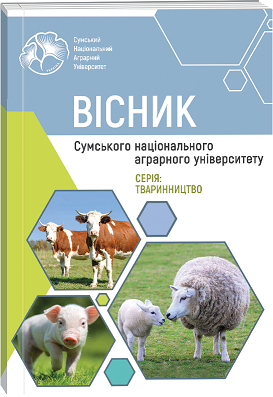RELATIONSHIP BETWEEN CHEMICAL AND PHYSICAL INDICATORS OF WATER WITH MORPHOLOGICAL SIGNS OF CANCER OF DIFFERENT SPECIES
Abstract
The object of research was the field of aquaculture, namely the technology of growing crayfish in a closed water supply. Studies have been conducted on the effect of temperature, oxygen saturation and water acidity on the morphological characteristics of crayfish. The aim of the study was to determine the optimal level of oxygen, temperature and acidity of the environment at which the largest increases and the lowest livestock losses are observed. The technology of industrial cultivation of crayfish is still under-developed. Cultivation of commercial crayfish with the determination of the optimal level of oxygen is the most important element of this technology. The influence of oxygen content in the cultivation of aquatic organisms is of paramount importance. The oxygen level is closely related to the temperature in the closed water supply system. Changing the temperature regime within acceptable limits does not cause significant changes in the development of crayfish, however, increasing the temperature accordingly increases oxygen consumption and activates other metabolic processes. The following results were obtained after conducting research: the best temperature for keeping all types of crayfish is 23-25° С. The change in acidity in the range of 6-8° T did not affect the increase in live weight of crustaceans. Changes in appetite, behavior, and gains were not observed in any group. When the oxygen level is reduced to 5 mg/l. there was an appetite suppression and a decrease in the mobility of red claw crayfish, and at the end of the sec-ond day 75% of the crayfish died. Oxygen starvation has also been observed in crayfish. Marble crayfish, which did not show a sig-nificant decrease in growth, suffered the best reduction in oxygen levels. Adverse conditions of the oxygen environment provoked a relatively high mortality of individuals. In the end, all this led to minimal bioproductivity.
References
2. Lawrence С., Jones С. Cherax. In: Biology of Freshwater Crayfish. / Ed. D.M.Holdich. UK, Oxford: Blackwell Science, 2002. pp. 635-670.
3. Xiaoxuan C., Zhixin W., Licai H. Effects of Water Temperature on Ingestion and Growth of Cherax quadricarinatus. Journal of Huazhong Agricultural.1995. (In Chinese with English Abstract).
4. Meade M.E., Doeller J.E., Kraus D.W., Wals S.A. Effects of temperature and salinity on weight gain, oxygen consumption rate, and growth efficiency in juvenile redclaw crayfish Cherax quadricarinatus. Journal of the World Aquaculture Society. 2002. Vol. 33,No. 2. pp. 188-198.
5. Сущеня Л.М. Интенсивность дыхания ракообразных. Киев: Наукова думка, 1972. 195 с.
6. Жигин А.В., Арыстангалиева В.А., Тырин Д.В., Ковачева Н.П. Определение оптимальной температуры и потребления кислорода при подращивании молоди австралийского красноклешневого рака. Природообустройство. 2017. №3.
С. 121–128.
7. Boon P.I. Organic matter degradation an dnutrient regenerationin Australian fresh waters. II. Spatial and temporal variation, andrelation with environ mental conditions. 1990. Archives Hydrobiolgie, 117:405-436.
8. Carolina T., Yanina P., Laura S. Effect of long term exposure to high temperature on survival, grow than dre productive parameters of the redclaw crayfish Cherax quadricarinatus. Aquaculture. 2010. Vol. 302. pp. 49–56.
9. Кузьмина И.А. Содержание растворенного кислорода в воде. Методические указания. НовГУ, Великий Новгород, 2007. 12 с.
10. Киреевский И.Р. Рыба и раки в домашнем пруду. Москва: АСТ 2007. 463с.
11. Бродський С.Я. Фауна України. Вищі раки. Річкові раки. Київ: Наукова думка. 1981. Том 26. Вип. 3. 212 с.
12. Gutekunst J., Andriantsoa R., Falckenhayn C. Clonal genome evolution and rapid invasive spread of the marbled cray-fish. Nature Ecology & Evolution, 2018, Vol. 2, pp. 567–573.

 ISSN
ISSN  ISSN
ISSN 



